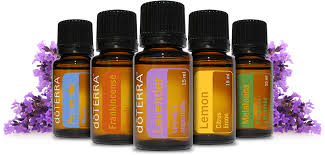Pharmacists are Poised to Help with Opioid Addiction!
/Drug addiction is in the news in a big way lately with Obama talking about a war on drug addiction rather than the past war on drugs with other administrations. It is definitely a combination of both. The drug lords who profit greatly from sales of drugs and the person who tries and becomes addicted. It is not uncommon in the medical field whether physician, pharmacist or nurse to know someone who has or will become addicted. I have had friends and colleagues to get involved either in the selling of medications or on the addiction and both are destructive. Pharmacists need to be involved in helping this growing problem.
Addiction is particularly sad. I cannot imagine anyone who is in their right frame of mind without addiction would choose to lose their job and family. It cannot just be a choice after choice but something much deeper and ingrained in a person’s DNA.
We see the patients who are being treated for addiction with buprenorphine, a partial mu-opioid receptor agonist, and methadone. We see patients coming in for routine surgeries and being placed on multiple pain medications with no real oversight on managing if the patient has the propensity toward opiate addiction and if the actual surgery itself will spiral them back into the addiction they once overcame.
The Centers for Disease Control (CDC) has spoken recently about the addiction crisis facing our nation and has released guidelines in prescribing pain medications to patients. The biggest message from the CDC is DON’T. The gist:
- In the cases of pain not including cancer pain, end-of-life care, or palliative care, use non-opioid medications.
- If you must use opioids, use the lowest dose.
- Monitor the patient
While some prescribers are careful in prescribing opioids, others are much more judicious. Not only is addiction a problem in some, oversedation and other side effects as well.
Personally, there was a time in my life when I was trying to find relief for low back pain that had plagued me from my running days. I was heavier and had had two children and felt like the pain was unrelenting. Ibuprofen and naproxen no longer helped, and I was desperate. You kind of know if you have a propensity toward pain medications (opioids), and I personally wanted to avoid them if at all possible. I ended up trying physical therapy and begged for back surgery but slowed down when a neurosurgeon said he would not operate on me and that I would be a fool to find someone who would. I listened and started working on weight reduction and core strength and found another alternative (radiofrequency lesioning) that bought me time to reduce facet joint lower back pain and increase my core strength. I’m happy to say it worked, but I know others who went the surgery route and their pain has only worsened. Their back was compromised further with fusion and the disc spaces above and below the fused joint has issues as well.
There are other causes of pain that are not mechanical like autoimmune disorders and neurological pain. In every single case, pain must be evaluated and treated at the lowest possible dose and side effects monitored. Gastroparesis happens. Oversedation and overmedication can cause death. Addiction can happen and cause a patient to seek illegal pathways to find something they are craving to feel normal.
How can a pharmacist help? Pharmacists can manage pain medications and are able to do so. They are able to help in finding the best possible pain med for the level of pain that a patient is experiencing. They understand how other medications like docusate can help alleviate some of the side effects that are very troublesome. There has been movement nationwide for better access for naloxone in opioid reversal in overdose. We need to have an ability to be paid for doing more to help pain medication patients, because pharmacists know more about the medications than anyone on the healthcare team.











